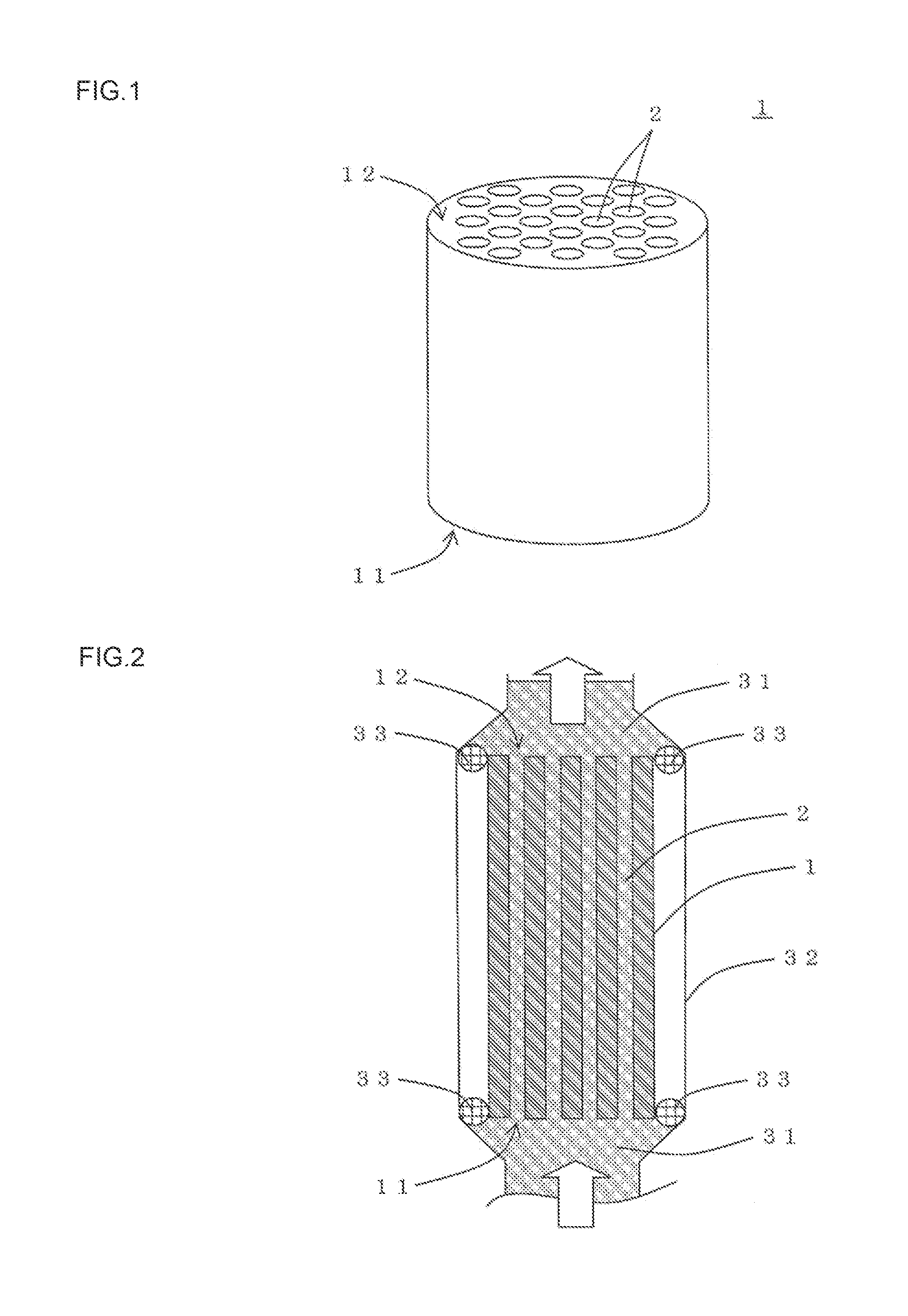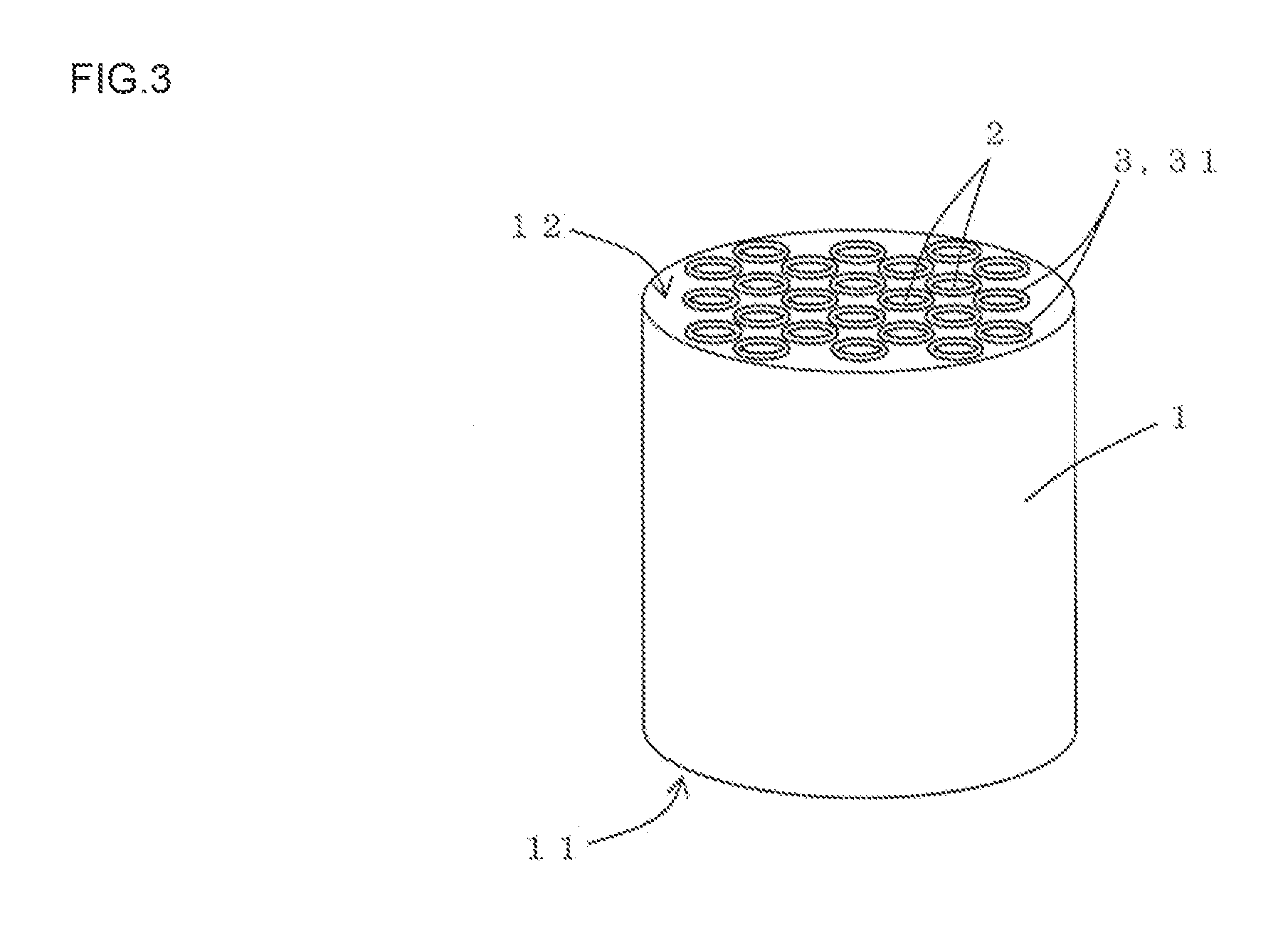Process for producing separation membrane, process for producing separation membrane composite, and separation membrane composite
a technology of separation membrane and composite membrane, which is applied in the direction of separation process, membrane, filtration separation, etc., can solve the problems of early deterioration due to organic acid degradation or degradation of separation performance, and achieve uniform membrane thickness, effective inhibiting the generation of thick membrane portions, and effective inhibiting the effect of deterioration
- Summary
- Abstract
- Description
- Claims
- Application Information
AI Technical Summary
Benefits of technology
Problems solved by technology
Method used
Image
Examples
example 1
[0116]First, there was prepared a porous monolith substrate which was a substrate for production of a separation membrane. A material of the monolith substrate was alumina. A shape of the monolith substrate was a cylindrical shape having a first end face and a second end face, in which a diameter of these first end face and second end face was 30 mm, and a length in an extending direction of cells was 1000 mm. In this monolith substrate, there were formed 50 cells extending from the first end face to the second end face. A shape of each open end of each cell was round. A diameter of each open end of one cell was 2.5 mm.
[0117]Prior to performing a membrane forming step, a sealing tape was wound around an outer peripheral surface of the above monolith substrate, to prevent a precursor solution from being adhered to a portion other than the surfaces of the cells of the monolith substrate.
[0118]Such a monolith substrate was disposed so that the cell extending direction was a vertical di...
examples 2 and 3
[0132]The procedures of Example 1 were repeated except that a suction time in a cell suction step was changed as shown in Table 1, to produce separation membranes. As to the obtained separation membranes, a generation ratio (%) of a thick membrane portion was obtained. Furthermore, as to the obtained separation membranes, a pervaporation test was conducted. The respective results are shown in Table 1.
example 4
[0133]The procedures of Example 1 were repeated except that a suction method in a cell suction step was changed to be “entire” as shown in Table 1, to produce a separation membrane. As to the obtained separation membrane, a generation ratio (%) of a thick membrane portion was obtained. Furthermore, as to the obtained separation membrane, a pervaporation test was conducted. The respective results are shown in Table 1.
PUM
 Login to View More
Login to View More Abstract
Description
Claims
Application Information
 Login to View More
Login to View More - R&D
- Intellectual Property
- Life Sciences
- Materials
- Tech Scout
- Unparalleled Data Quality
- Higher Quality Content
- 60% Fewer Hallucinations
Browse by: Latest US Patents, China's latest patents, Technical Efficacy Thesaurus, Application Domain, Technology Topic, Popular Technical Reports.
© 2025 PatSnap. All rights reserved.Legal|Privacy policy|Modern Slavery Act Transparency Statement|Sitemap|About US| Contact US: help@patsnap.com



